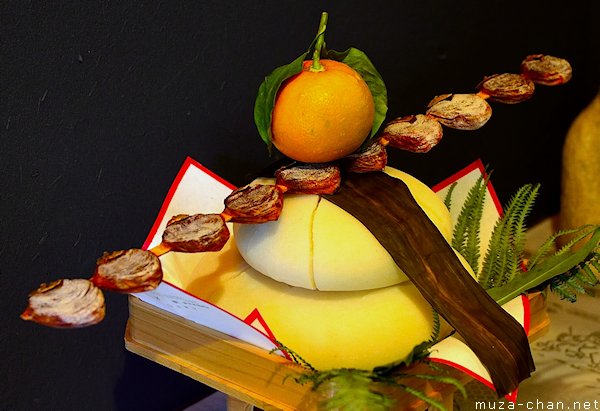Unlike Shimekazari and Kadomatsu, which are displayed outside, Kagami-mochi is an interior decoration, meant to be displayed inside the tokonoma, in the kamidana or, in the modern times, on the table.
Kagami-mochi is an offering for Toshigami, the kami of the New Year, and it is considered to bring good luck and prosperity.
The simplest variant is made with two mochi (Japanese rice cakes) placed on top of each other, and its name comes from the shape of the mochi, that reminds of the copper mirrors used in the old times - kagami in Japanese.
On top of the rice cakes is placed a Japanese bitter orange called daidai, which symbolizes long life and the continuity of generations, because the kanji writing for daidai 「代々」 can also mean “generation to generation".
EXIF Info:
|
Yesterday’s Japan Photo:Japanese New Year decorations, Kadomatsu |



